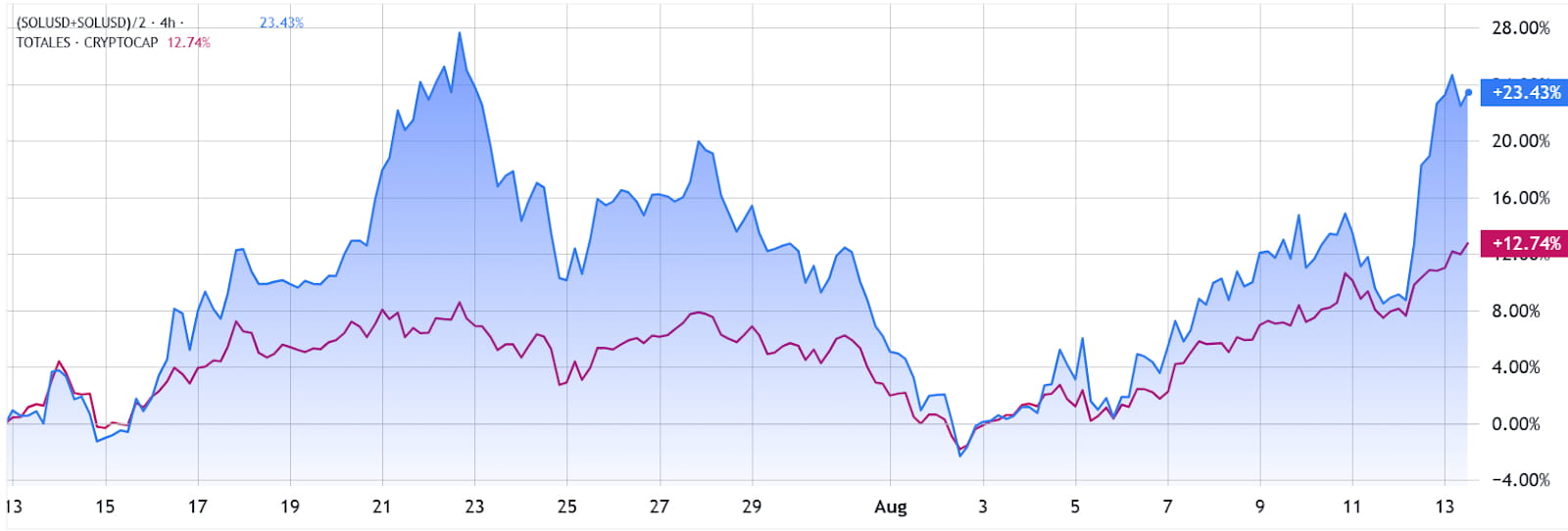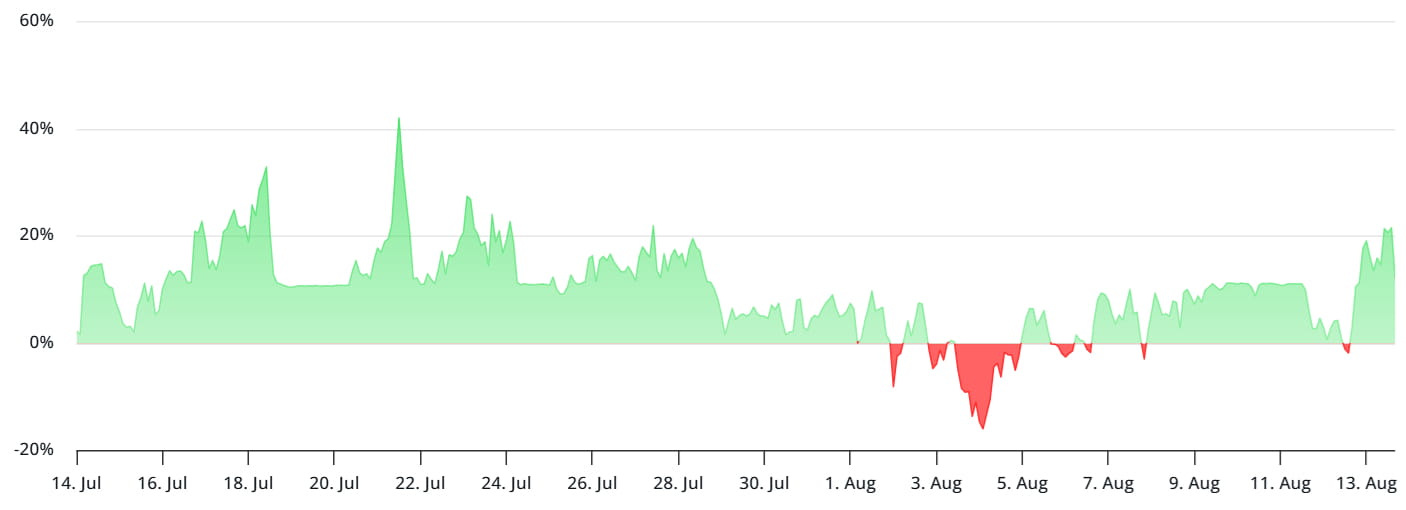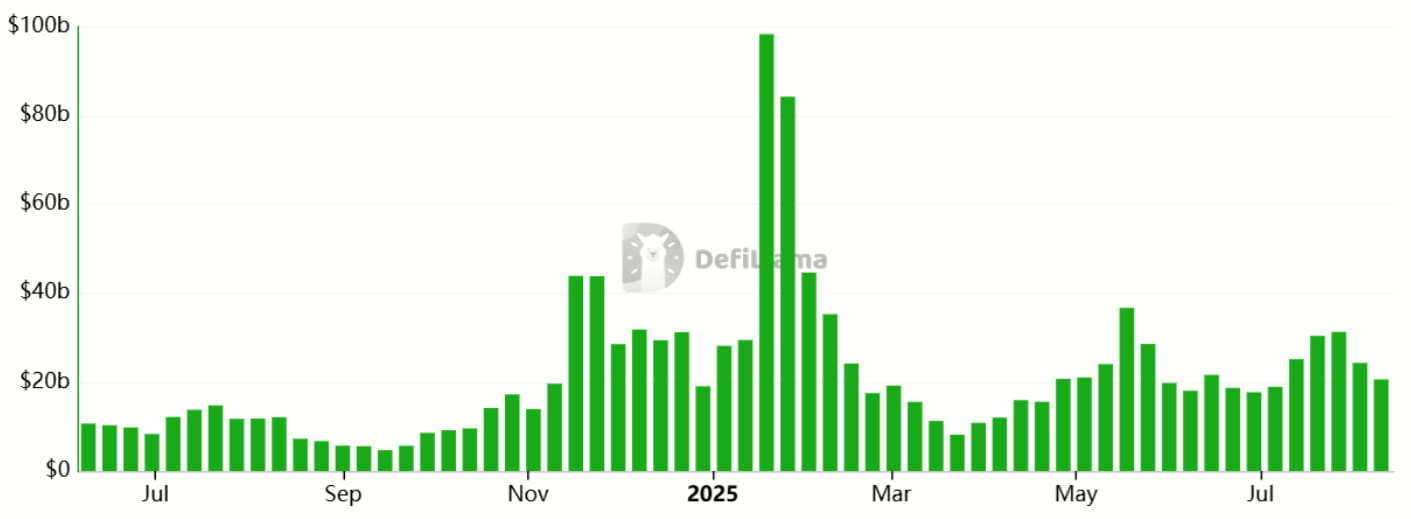The price of $SOL broke through the $200 barrier, but data analysis shows that there are not enough factors to reach new highs.
Key takeaway recommendations:
Growth in Solana's on-chain volume supports the current growth, but the decline in DEX market share suggests that traders are cautious.
The funding rate for SOL perpetual futures is close to neutral, which indicates limited bullish momentum.
Solana token, SOL, briefly reached $205 on Tuesday after rising 18% in less than two days. This sharp jump has fueled speculation about whether SOL can rise to $250 in the near term. Traders are assessing network fundamentals and derivatives activity to determine if there is enough momentum to continue the growth.

Despite the fact that SOL failed to overcome the psychological threshold of $200, it outperformed the cryptocurrency market as a whole. The latest increase to $199 increased its market capitalization to $107 billion, which is still less than that of BNB, which has a capitalization of $117 billion. To determine if a 'flippening' is possible, both network fundamentals and indicators must be examined.

Over the past 30 days, the number of transactions on the Solana network has grown by 48%, indicating an acceleration of activity on the network and supporting the SOL price forecast. For comparison, according to Nansen data, the number of transactions on the BNB Chain network decreased by 41% over the same period. Network fees on the Solana network have also increased by 43%, suggesting that increased network usage is bringing tangible economic benefits to token holders.
Futures on $SOL demonstrate a moderate appetite for risk from the bulls
To understand whether traders are optimistic after SOL approached its highest values in the last six months, one must pay attention to perpetual futures contracts. To balance the imbalance in demand for leverage, exchanges charge a funding fee to either buyers (longs) or sellers (shorts). Levels above 12% usually indicate a bullish trend.

Currently, the annual funding rate for SOL perpetual futures is 12%, which is on the verge between neutral and bullish sentiment. Traders are skeptical, recalling that the last time SOL traded above $200, on July 22, it lasted less than 24 hours. Investors are also not enthusiastic about the volumes on Solana's decentralized exchanges (DEX), which are declining.

According to DefiLlama data, DEX activity on Solana has fallen for the third week in a row to $20.6 billion. Over the past 30 days, Solana's DEX transaction volume of $113.7 billion was slightly lower than Ethereum's $116.2 billion, and this gap does not take into account the Ethereum Layer 2 ecosystem, which added another $91.7 billion. For SOL holders, these numbers are not particularly encouraging.
REX-Osprey Solana Staking Exchange Traded Fund (ETF), launched in July, has accumulated $161 million in assets. For comparison, since August 5, net inflows into Ethereum ETFs have been an impressive $2.33 billion, despite the fact that Ethereum products have not yet received approval from the US Securities and Exchange Commission to use staking features.
While nothing prevents SOL from reaching $250, current on-chain transaction and derivatives data do not indicate a clear catalyst or surge in enthusiasm among traders. However, the lack of excessive leverage may contribute to more sustainable growth, although this will depend on an increase in the number of retail traders and institutional investors, whose inflows still depend on the SEC's approval of a regular Solana ETF.